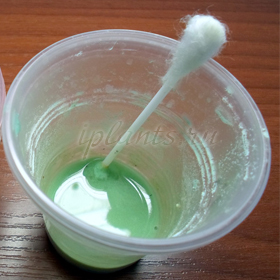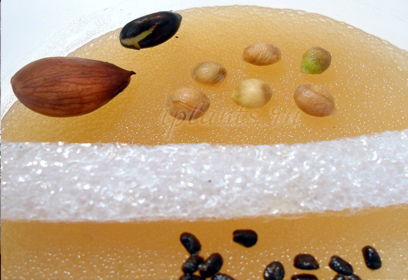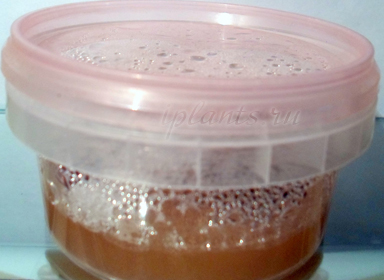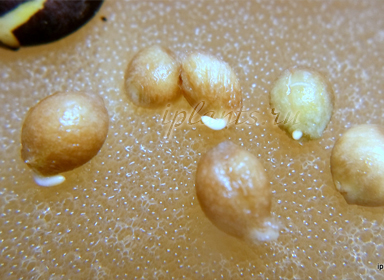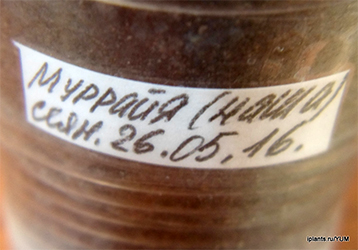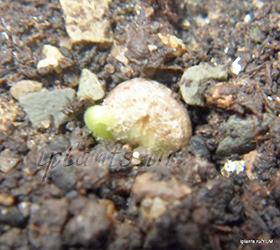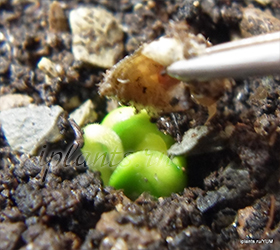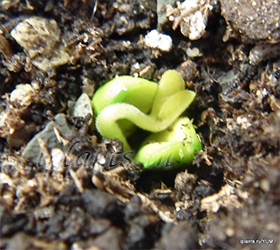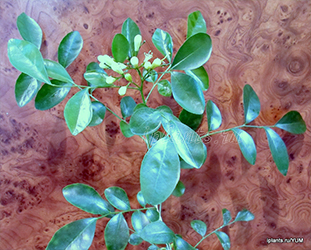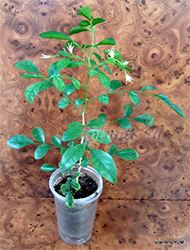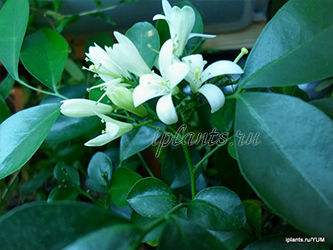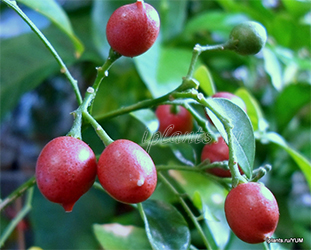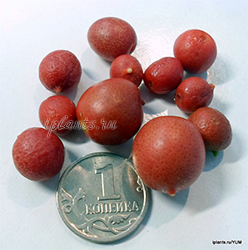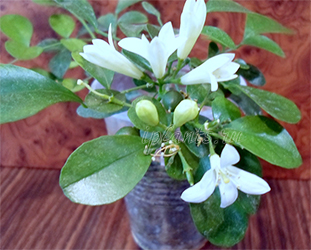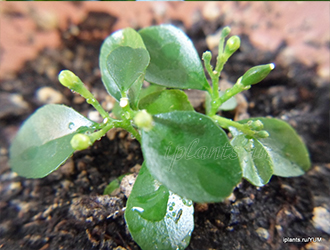Murraya is one of the most popular tropical exote plants that can be grown on your windowsill. The attractiveness of murraya is obvious: openwork spreading crown, abundant fragrant flowering, responsiveness to attention and care (abundance of berries). The murraya plant very well cleanses the air in the house from chemical compounds emitted by building materials and household appliances, and in addition, it emits phytoncides and aromatic oils, which contribute to the reduction of pathogenic microorganisms in the air.
Yuri Alexandrovich Markin, a collector and florist, shared his experience with us.
Our Murraya and Dutch
Murraya belongs to the root family, is the closest relative of citrus. At home, Murraya paniculate Murraya Paniculata is most often grown - it is easier to get seeds, purchase and receive by mail. Very often you can hear the terminology "Murraya Dutchwoman" and "Murraya ours." What does it mean?
In fact, both are the same species - Murraya paniculata, a synonym is Murraya exotica, the popular name is Orange Jasmine. The plant got its name in honor of the 18th century Swedish botanist Johan Andreas Murray. And it is written in Latin - Murraya, hence the two letters "p" in the spelling of the name. But first, the second letter "p" began to be omitted from the name of Murraya - this is easier to pronounce, and then it disappeared from the spelling of the name of the plant, which, of course, is incorrect.
From observations of numerous seedlings, I can say the following that they grow and develop in different ways - some grow compactly and bloom when the first pair of real leaves appears, others pose as Dutch women, grow by leaps and bounds and do not think to bloom. In general, very wayward plants, the crown develops in different ways, although it is possible and necessary to form.
There is a variety of Murraya 'Min a Min' - in nature there is a very dense shrub no more than 1 m tall, the length of each leaf is about 1.5-2 cm. And of course, in its unique species Murraya black-fruited Murraya koenigii - its seeds can also be found on sale, the popular name is' curry tree' - its pinnate leaves are more elongated than those of the murraya panicle - lanceolate, pointed at the end with a town edge, are included in the mixture of curry spices (leaves have a distant smell of turpentine). The flowers are not white, but rather light cream, in multi-flowered scutes. And the berries turn black when ripe.
Murraya belong to self-pollinated plants, the fruits are tied easily. After the berries ripen, seeds are collected and can be sown.
Note rukodelie.net/plants: among flower growers there is an opinion that the "Dutch Murraya" is a direct plant, poorly branching with loose branches, its complex leaf consists of 7-11 leaves, and flowering for 5 years; in "our murrays" the bush is compact, branches well, and the complex leaf consists of 3-7 leaves and seedlings bloom from a very early age (2-3 months from seedlings). In fact, there is no such variety as "Dutch Murraya," there are various clones of the same plant. A little science:
The latest study, published in the American Horticultural Science Society HorstScience "Direct Shoot Organogenesis in Murraya paniculata (L.) Jack: A Prerequisite for Genetic Transformation" in July 2013, was conducted to investigate whether there are differences between murraya leaves and flowers obtained in various conditions. Plants were grown in vitro and under natural conditions, morphological and anatomical differences also manifested themselves in the growth rate and shape of the bush, the size of the leaves, and the rate of flowering. Therefore, if you want to get an exact clone of the plant you saw, it is advisable to purchase fruits or cuttings from the selected plant. Dutch and American (Logee's Plants for Home & Garden) suppliers have completely different clones.
Murraya paniculata seed technology
Production and preparation of murraya seeds
When the seeds ripen, it is better not to overexpose, so as not to begin to rot directly on the branches, if they themselves do not fall off (this has not happened - never).
We eat or wash the pulp, freeing the seeds. If there are remnants of pulp, clean it carefully, rinse it in a strainer under running, warm water and place it in a depleted solution of Bordeaux liquid. He, with me, becomes impoverished due to the constant evaporation of moisture from the glass. I add fresh water, part of the active substance, one way or another, decreases during use. A glass of solution has been on the shelf in the bathroom for about a year, has not lost activity, it only constantly precipitates - you have to mix when using.
In this example, the seeds were aged in a fungicide - a day (it was simply not up to them). And so, in the evening they are soaked - at night, in the morning they are washed under running water and put into a greenhouse on wetted foam rubber.
Seeding
So, the seeds are pre-prepared - cleaned of pulp, washed under running water and soaked in a solution of Bordeaux liquid or copper sulfate for 2-3 hours, washed again and put in a greenhouse for lancing roots. All this is done in order to visually reject low-quality (underdeveloped, rotten, empty) seeds. And so, you can sow all the seeds at once, without sorting, and, hopefully, out of 10 pieces, all 10 will germinate, but it's not a fact that this will happen. Even viable seeds, for some reason, may not germinate - just by rotting in the ground.
It has been noted that if the seeds are green, then the roots are pecked quickly, if the seeds have a beige tint, then a little longer, brown - not viable, they are already rotten and not developed. In such seeds, in the residue, there are only the outer and inner shells, the embryo itself, as a rule, is no longer there or it has rotted, or was completely small.
Seed germination will occur in a greenhouse from a container, with a foam insert embedded at the bottom, filled with water until this substrate is wetted and water appears on the surface - barely.
The greenhouse is heated, on a glass shelf, which in turn is in direct contact with the towel rail. The heating temperature is about 32-35 ° C. Note that for seeds; murraya, citrus, tomato, pepper, pomegranate, figs, kiwi , etc., such a high heating temperature is quite acceptable and works well. It has been noticed that the roots are stuck even faster if you remove the greenhouses from the heating at night and leave them in the same place in the bathroom. Sown seeds, with sticky roots, can be placed in a room with a temperature of 26-28 ° C, under cover in the form of a greenhouse from an inverted cup, until the sprout is pierced. At lower temperatures (below 24 ° C), sprouts appear a little later.
By the way, for the seeds of the Japanese Mushmula - this temperature turned out to be high. More than 1.5 months of standing on heating, not a single one put on a spine. As soon as the hot water supply was turned off and the greenhouses moved to a room with an air temperature of 28-30 ° C, they immediately began to stick roots. Almost all seeds have already been planted in individual cups, with a shelter from an inverted cup, in the form of a greenhouse - so as not to water the soil until seedlings appear and the shelter is removed.
Planting seeds in the ground
Roots are pecked in different ways, mainly in 3-4 days, up to 7 days. I plant them in plastic cups with a volume of 100-200 ml, at the bottom they have four sections crosswise (drainage holes). The cups are filled with a self-prepared soil mixture of approximate composition, which is prepared for citrus fruits. The soil is watered until completely wetted. This cup is inserted into a similar one, but already without slots or installed in a common tray (wide, large tray).
After disembarking in 100-200 gram cups, and installing under the lights, the cups are covered with caps. Thus, a greenhouse is created from inverted cups of the corresponding size. Constant humidity is maintained in the greenhouse, which contributes to faster germination of seeds and liberation from the outer shell. Also, the soil does not require additional watering and moistening, since its humidity is preserved in the greenhouse.
In order not to accidentally injure a young root, a small depression is made in the moistened soil (with a metal nail file) - the seed is inserted without any effort, slightly deepened relative to the ground level and with a saw, the soil is squeezed around the planted seed.
By the way, for planting citrus fruits, in 200 ml cups, I make a puncture of the soil with the same file, almost to the bottom. To plant the seeds of the medlar, shaking the stuck file, back and forth, expand the hole. In principle, if you do not bother, then the seeds can easily be stuck in the newly moistened, and still quite loose in the upper layer, soil.
Murraya - departure for crops
In makeshift greenhouses, seeds stand until shoots appear. Cups, usually at night, are shifted by 1/3-1/2 - for acclimatization. In the morning, before leaving for work, or, in the evening, the shelter is removed. You can play it safe and remove the shelter in 2-3 days.
With the first watering without shelter, the upper layer of the soil is necessarily mulched (loosened) - this way the water will not stagnate and, if the soil dries and has managed to slightly lag behind the walls, then, after loosening the upper layer with a small screwdriver, stick, or the same file, you can fill the voids around the perimeter of the container.
All the time in the greenhouse, cups with seedlings are in the general lighting of the room with numerous lighting devices that illuminate the plants.
If you saw that the seed began to break through the outer shell, after about 7-14 days, then, with tweezers, you can carefully remove it without damaging the sprout (you can leave it as it is, and wait for the sprout to break through the shell on its own).
As soon as the rupture of the outer shell of the seed was noticed. It can be carefully removed, first (additionally) moistened with water from the spray gun, so it can be easily separated from the seed. In this case, the cap from the inverted cup is removed immediately.
Usually, I remove the shell myself, moisten the sprout from the sprayer and remove the cap from the inverted cup - right away.
If this moment is missed, then several options are possible for adapting the seedling sprout that has already developed in the greenhouse.
-
Option 1,
- remove the cap overnight and moisten by spraying with water from the spray bottle. Option 2,
- move the cap from the inverted greenhouse cup by 1.5-2 cm and hold it for 1-2 days. Then, simply remove the cap, you can spray, and again - at night.
Murray seedlings, freed from shells, are installed under lamps for further vegetation. Some stand under a regular 11W office fluorescent lamp, but a lot of light drops from nearby 2x35W + ESL105W haze - also nearby.
And in a month, young murrayki will grow (in my conditions, from freshly planted and prepared seeds):
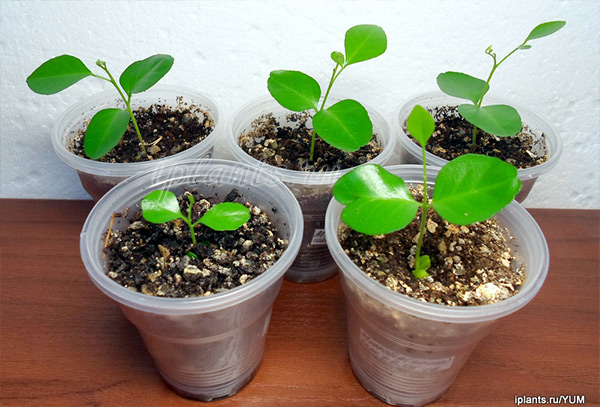 Murraya panicled, seedlings - a month, 26.05.2016
Murraya panicled, seedlings - a month, 26.05.2016Murraya flowering and fruiting
I have many specimens of Murraya paniculate of different ages, large plants and young, photos of murraya from different bushes. Murraya Paniculata (Russia) - seed cycle in home cultivation:
Murraya pruning
Murraya is very responsive to haircuts, easy to form. The only remark: there is no need to cut all branches at once and carry out all events exclusively in the growth season - from the end of winter to the end of summer. It is necessary to gradually shorten the ends of the shoots, this stimulates the growth of the crown. You can make elbows on long side verves - rooting is better and faster than from a handle.
You can form a murraya with a stamp - align one of the lower branches and pinch and trim at the desired height. I do not recommend cutting large branches right away, they need to be shortened gradually. The stamp is convenient in that at first the pot with the plant can be placed on the podium or a table by the window, and subsequently, when the tree grows up, make it up by half. The crown will just be at the window level, and there will be enough light.
By the way, if you are waiting for the fruit to ripen, and then, if you want to prune, then I assure you, nothing will work. The thing is, murraya won't give you that chance. Murraya constantly has buds, ovaries and fruits in the ripening stage. And for good nutrition, like other plants, murraya needs to preserve all the leaves that will nourish not only the plant itself, but also the fruits.
So you have to choose what you need. If for treatment, then you can cut off some old leaves, twigs that do not fit into the formation of the crown, or buy in general - a Dutch woman specifically for medicinal needs.
Note rukodelie.net/plants: scientific studies show that Murraya paniculate (like Köninga) blooms better and bears fruit in very good lighting. If you get a Dutch clone that is not prone to lanky and low-blooming or not blooming at all, you should try increasing daylight hours to 16 hours a day. The intensity of lighting is high, however, in the spring it is worth gradually accustoming to the sun to avoid burns.
Care for Murraya
In young seedlings of murraya, about to bloom, buds must be pinched - it will grow faster and will save strength (buds and petals to collect in tincture or brew tea). Murraya will respond to such an action with a repeated set of buds, they need to be pinched again. Thus, we do not allow her to tie the fruits before the set of vegetative mass - from about 15 to 25-30 cm in height.
Fertilizing
Young plants, about 10-15 cm tall, do not need to be fed, it is important to transfer to slightly large pots in a timely manner after the roots have filled the entire volume of the soil provided (this can be seen in transparent plastic cups). I feed my murrays when the leaves indicate a lack of nutrition and when tying fruits. Murraya does not tolerate overfeeding, does not like fatty and heavy nutritious soils.
As for feeding, I feed very rarely - "Flower happiness" drops for citrus fruits at the time of bearing fruits, since growth is restrained due to the lack of space for large plants. And so, if you transfer correctly and on time, 2-3 months after the transplant, I start feeding: organic with macro-microelements (from NPO Life Force LLC - Florist (Rost)) - at the time of active vegetation. And also with organ-mineral fertilizers "Emerald" from ZAO MNPP Fart - alternating them, taking into account the state of the leaves and the season, in the spring - "Emerald," and the rest of the time "Growth."
At the moment of tying the fruits and their gestation - citrus fertilizer - "Flower Happiness" from Fasco. They can also finish feeding in the autumn - there is more potassium in it than in other fertilizers. It is better to make top dressing, in half a dose, of all I prefer the last "Flower Happiness" from Fasco. Do not forget the main rule - "It is better not to feed than to overfeed!"
Watering
Murrayas love uniform moistening, drying with the loss of turgor can be normally transferred, but the drying of leaf blades (about 2\3, especially old ones) can already lead to the final death of the plant. There were such cases, and therefore I speak from the practice of observations, irretrievably lost specimens, as well as those flooded with constant watering with insufficiently dry soil - anything happens when there are many of them in small containers of 100-200 g cups.
Lighting
My lighting is artificial (lamp), completely diverse. They can also grow under 11W fluorescent, desktop, office lamps 7-10 cm from the top of the head. They can successfully grow under linear fluorescent lamps, in my case - also 60 cm from the window of the South-West direction. And also under the ESL at 32W and 55W at a distance of 10-20 cm. And under the ESL at 105W, with a distance of 20-30 cm. The additional illumination time, or, in general, maintenance under artificial lighting, is 12-14 hours.
But, better murrays grow in light shade in natural light. Without shading, the leaves burn out to a yellow or whitish tint quite quickly. I.e. if you keep it on a "walk," on the balcony, then, better against the wall of the apartment, away from direct sunlight at noon, better morning sun, it is less active, relative to the evening, taking into account the warming up of the air and the decrease in humidity. If murraya is originally grown in natural light, then the leaves may not burn out, since they are already adapted to active solar insolation.
Text and photos: Yuri Alexandrovich Markin (nickname on the YUM forum)
We invite you to join the discussion of sowing murraia, cultivation or problems in care on the forum: Murraia
